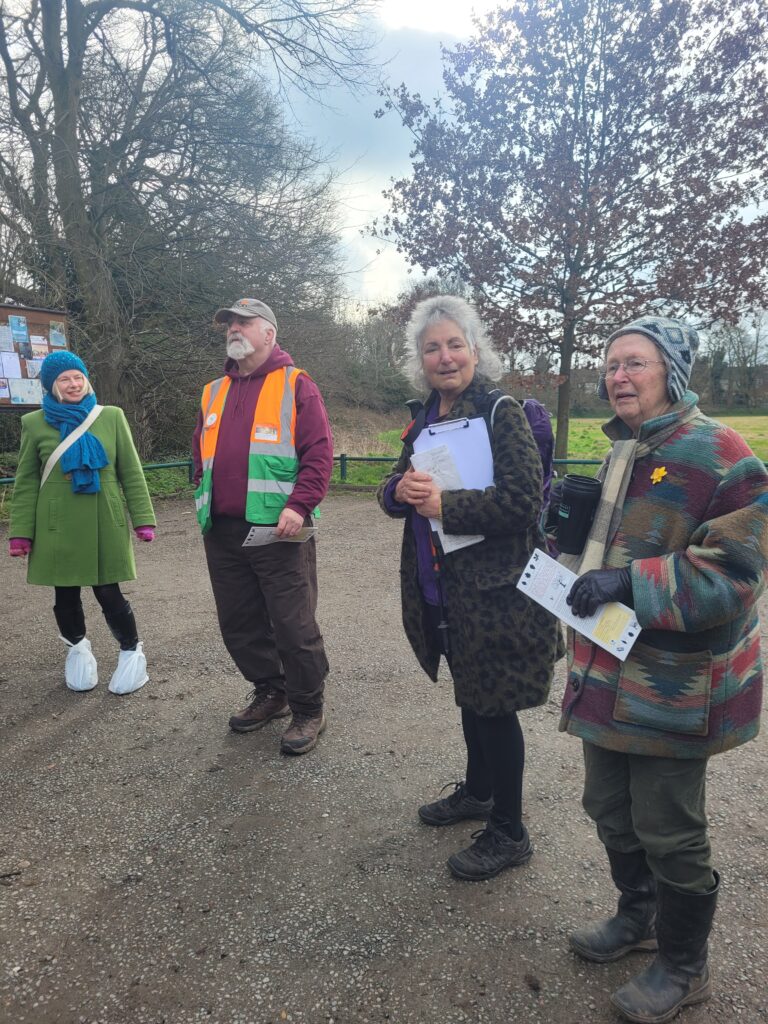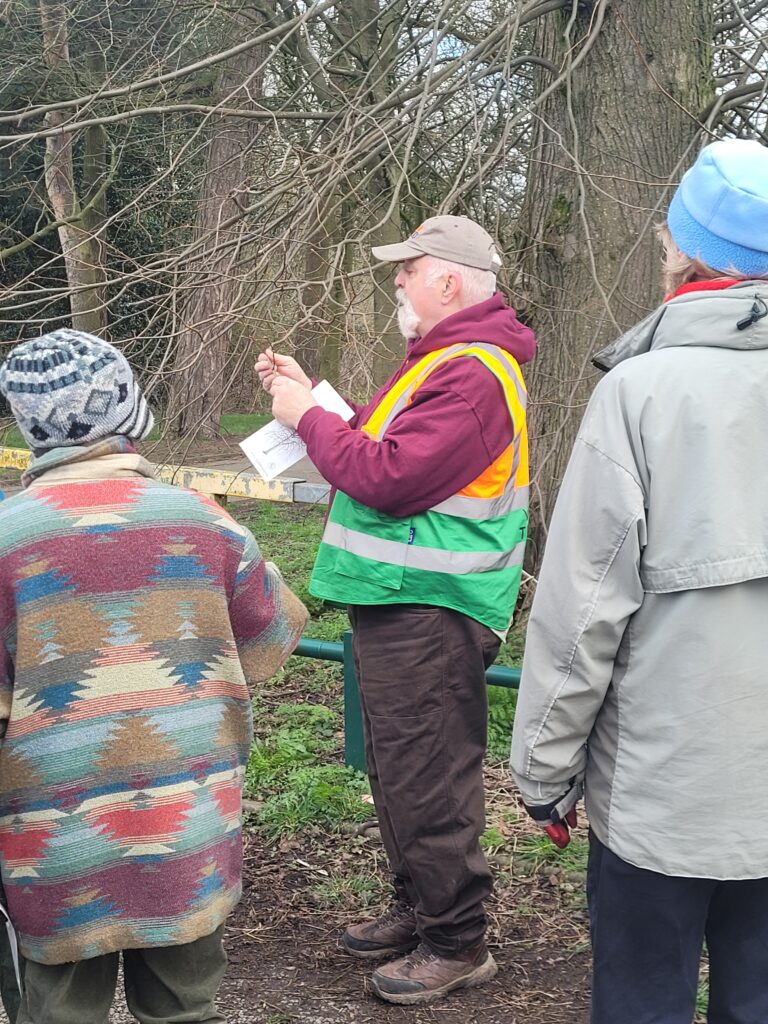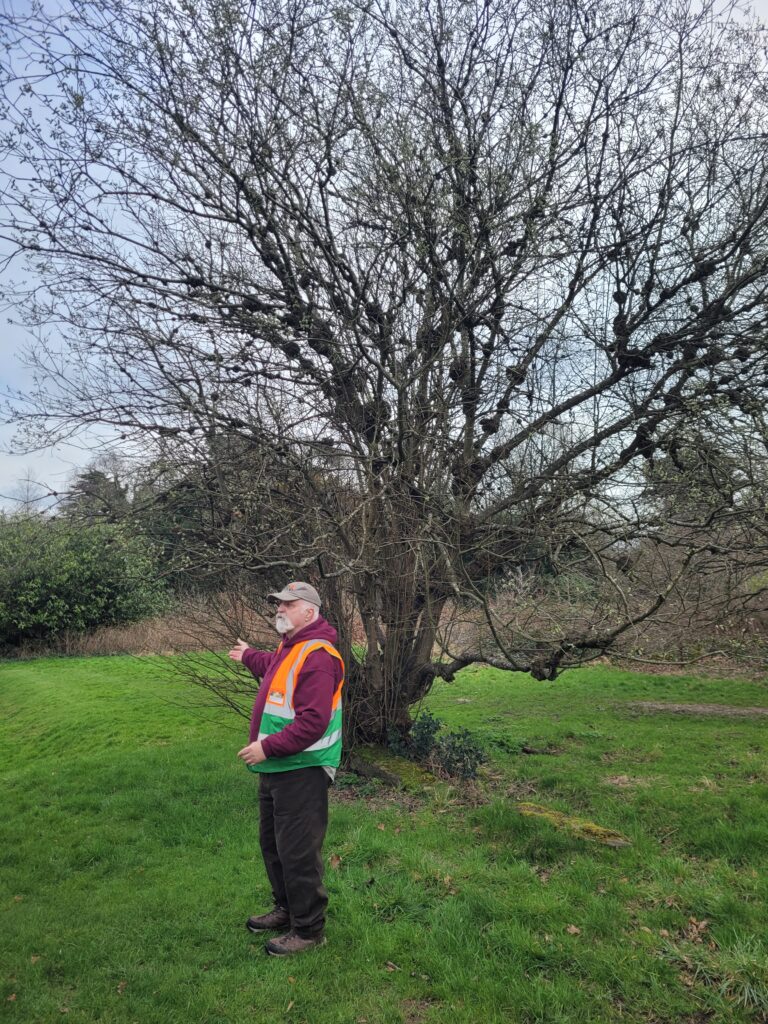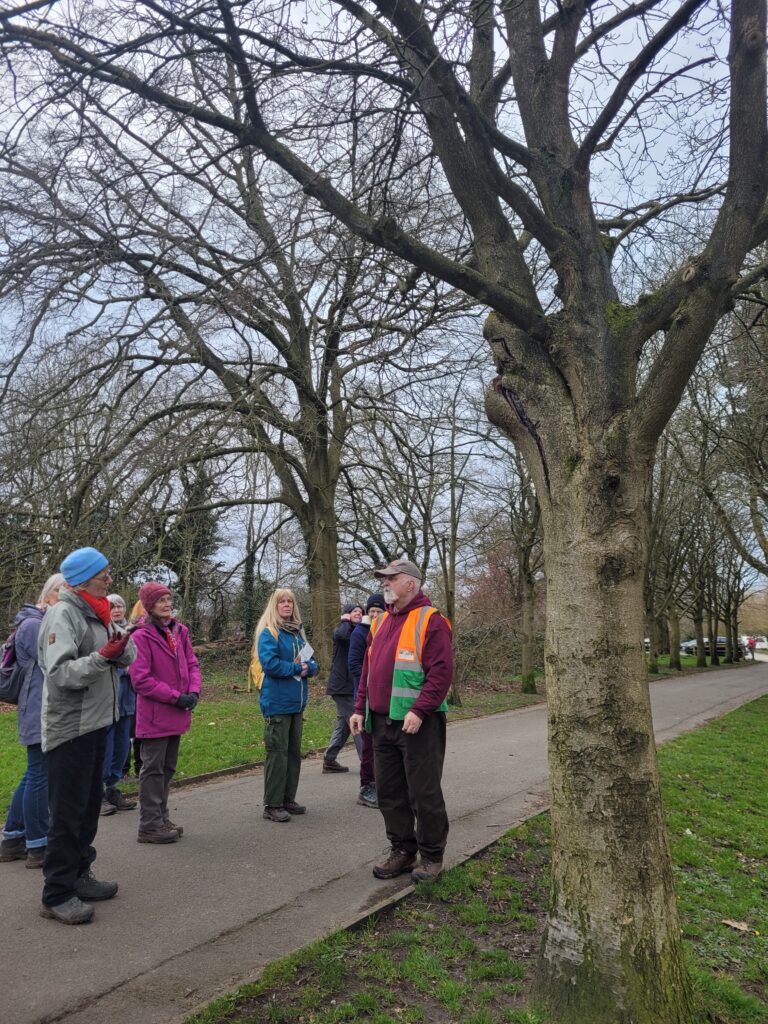
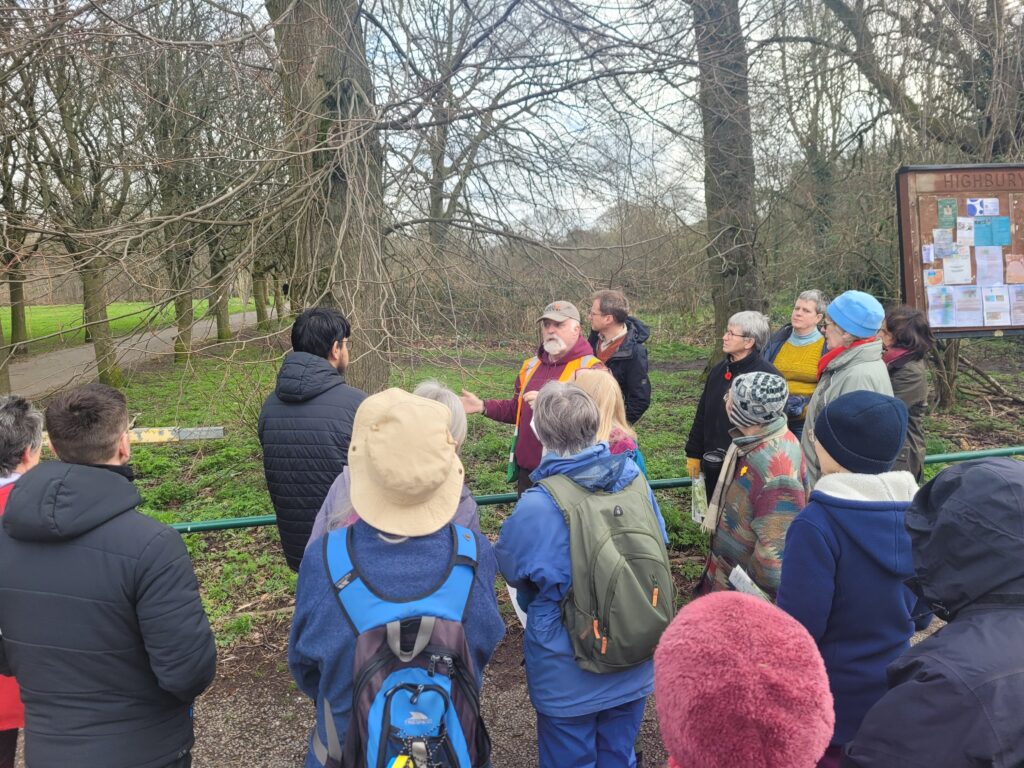

On Saturday 16 March, we gathered in Highbury Park, with Highbury Park Friends, to host a training session on winter tree identification. After the success of the previous session here in December 2023, this tree talk ran effortlessly, and was incredibly informative on the mostly native trees that dwell in this green space.

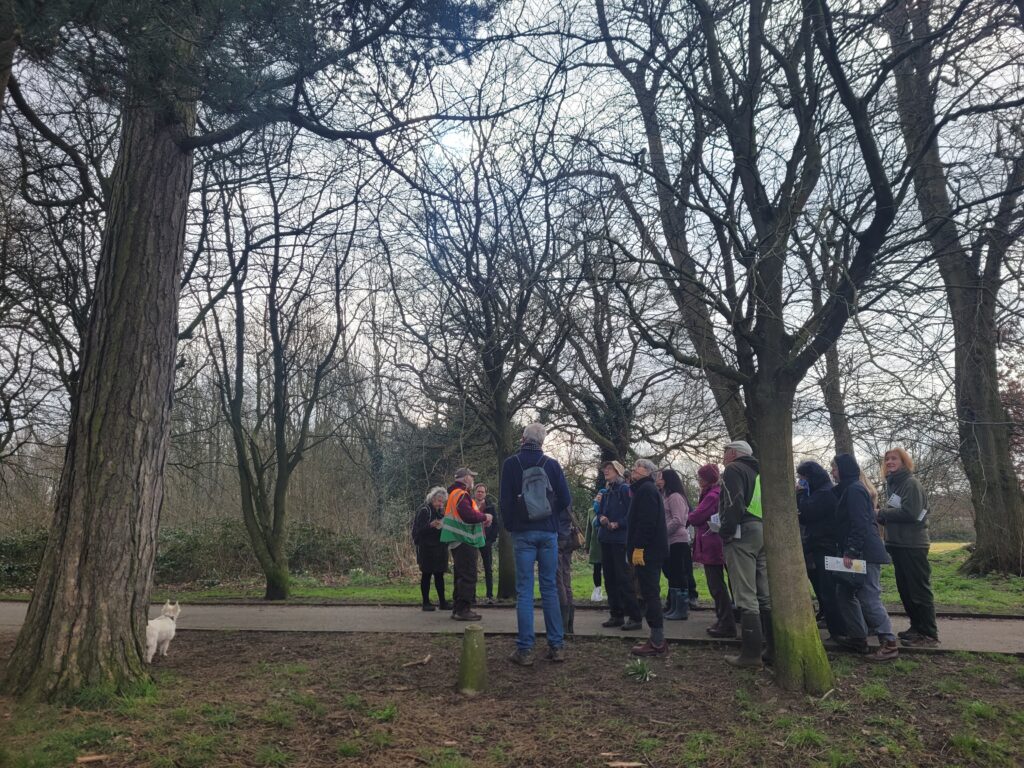
The joint group of thirty volunteers gathered to learn how to identify these trees, through bud formations and bark. Starting with our most common street tree, the Lime, Mac began the ident session by talking about the different kinds of buds. Silver Lime (a large, grafted tree), however, causes bees to starve!
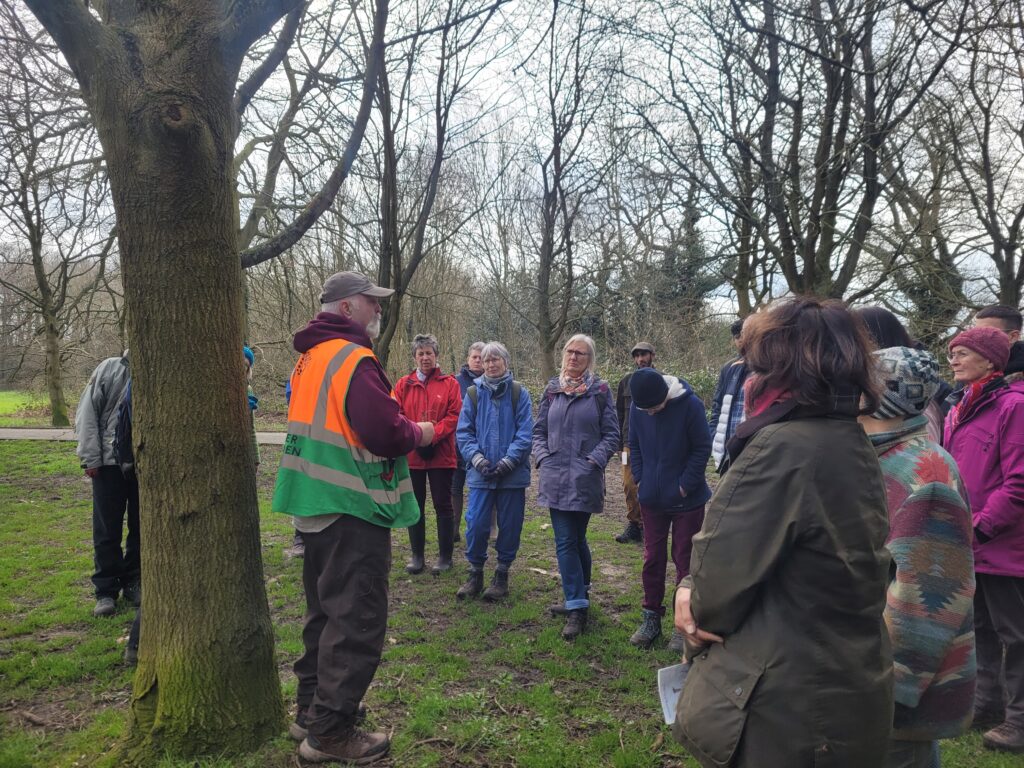
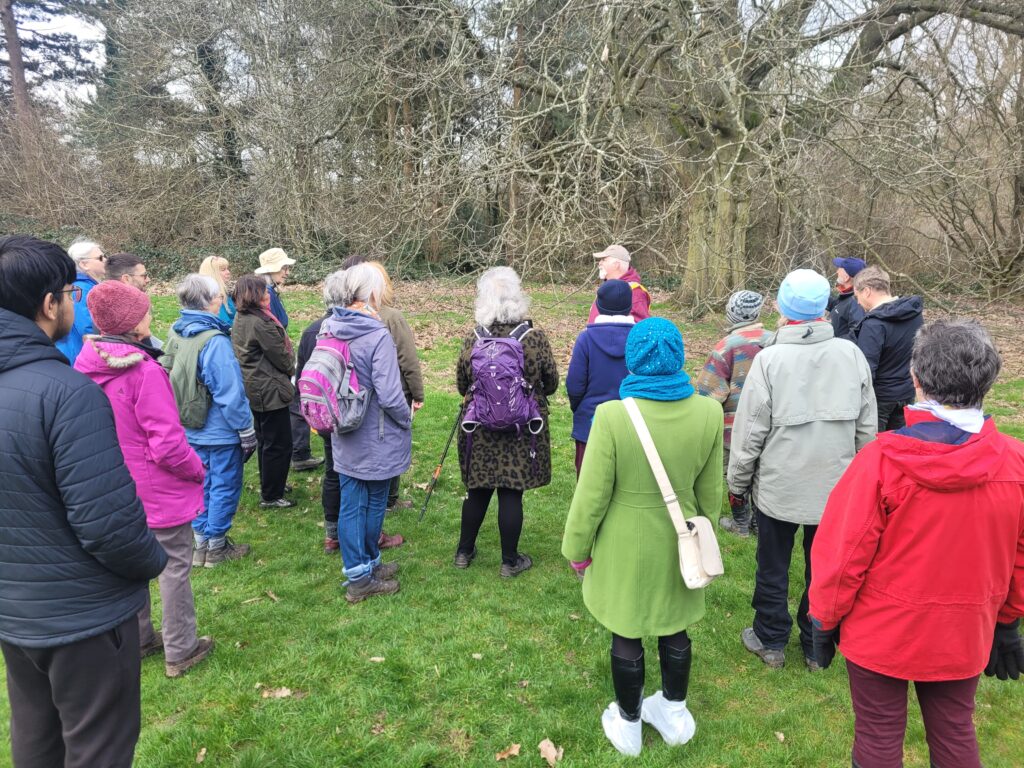
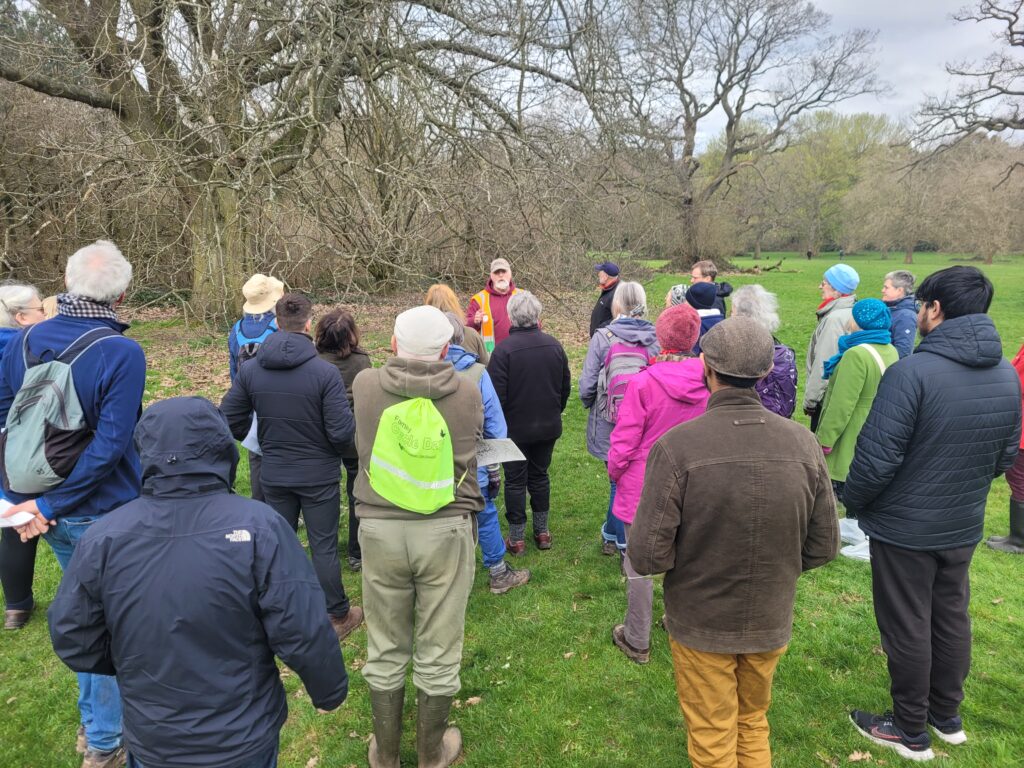
The Black and Scots pines can be identified through the shape and length of their needles; Black being typically twice the size of Scots.
Knowledgeable volunteers knew that the spiky leaves on Holly are a chemical response and defense mechanism to being eaten or defoliated; we can run, but the trees must stand and fight, so over time they develop the most spectacular ways of defending themselves from their predators.
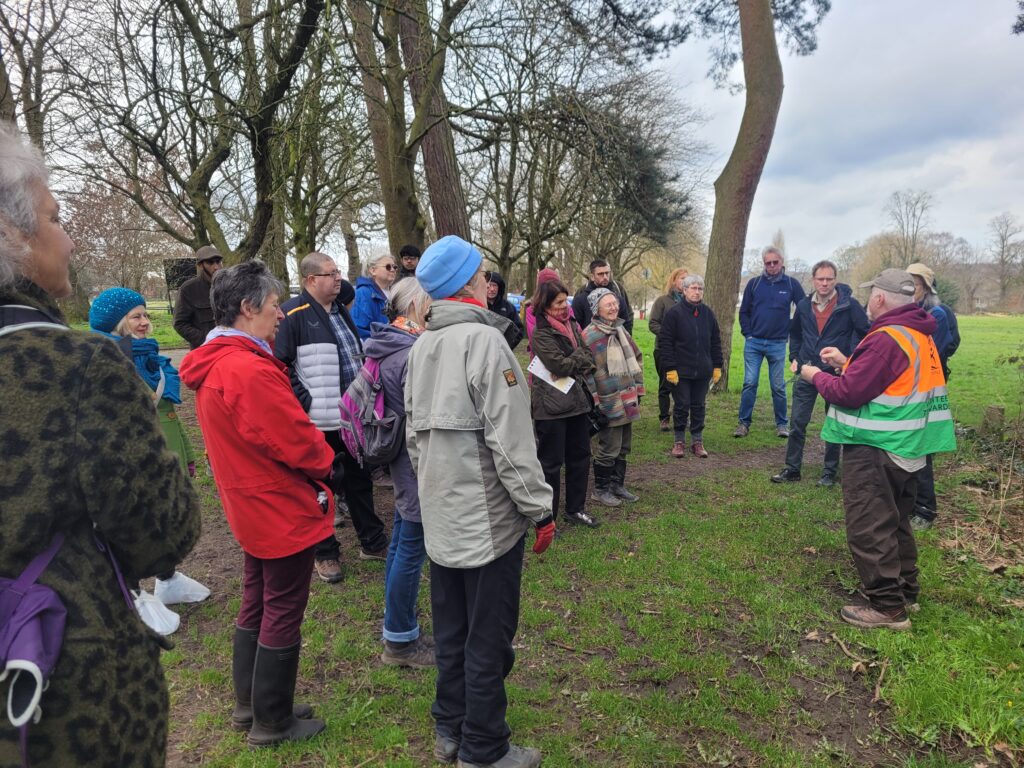

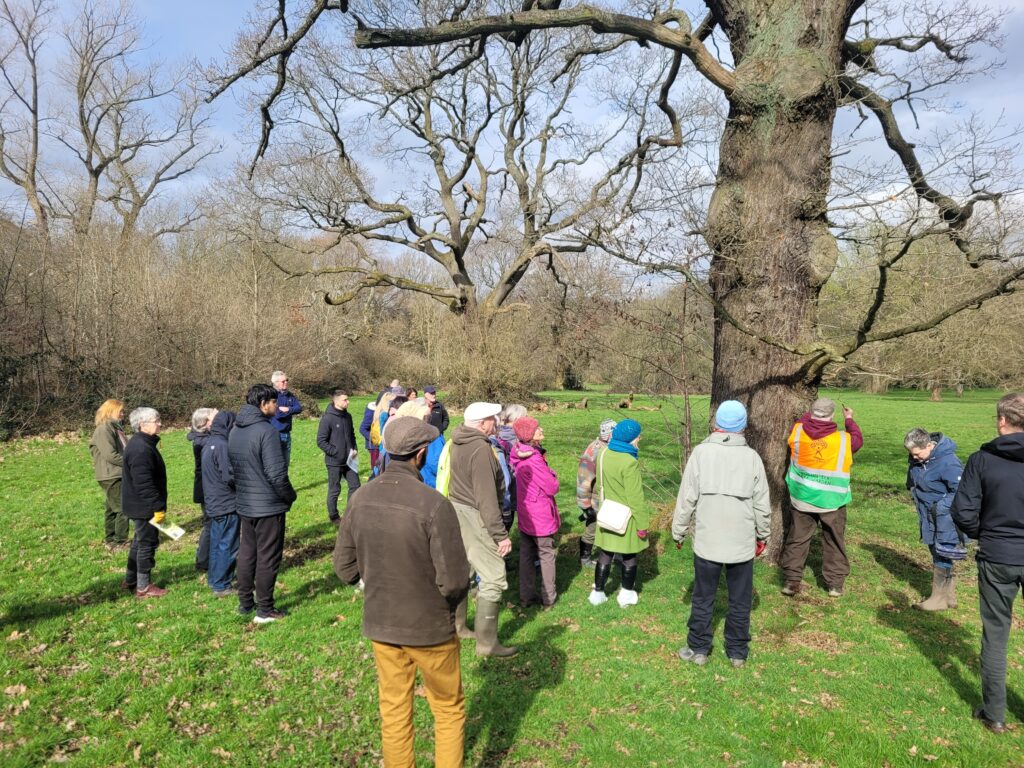
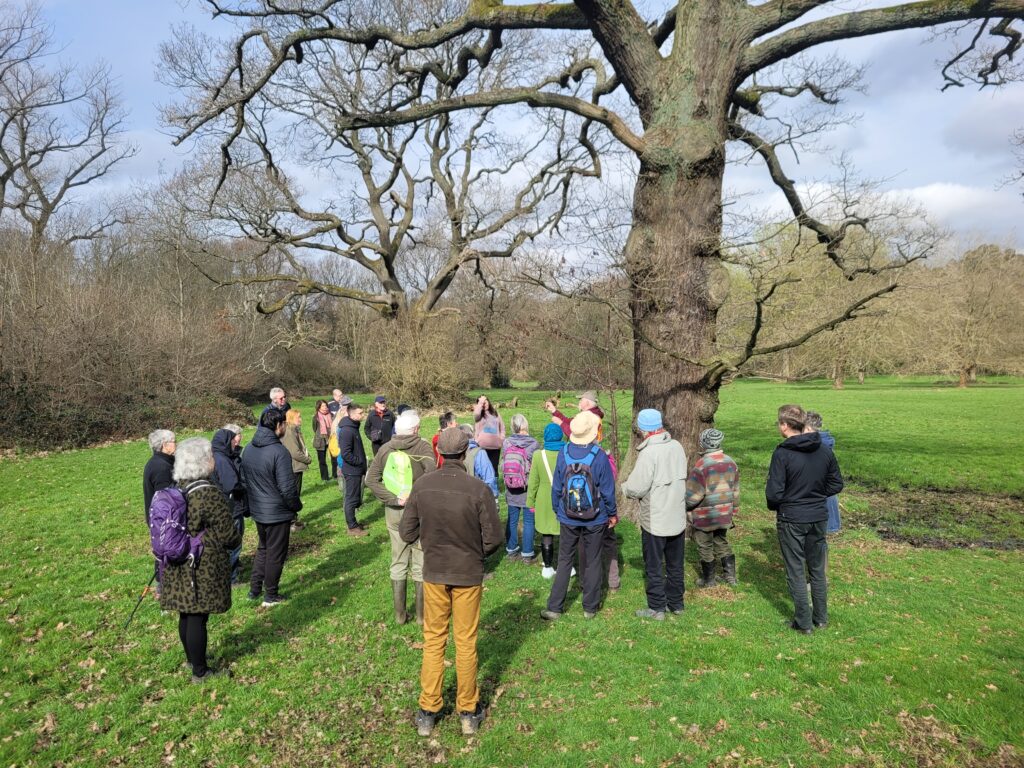
Many of us will be aware of the effects of Ash die back, and we can identify this tree by their black terminal conical bud. The fungus, chalara, settles on the ground and the spores attack this brittle, native tree, to the point that they’re seeding prolifically as a near-death response. It is predicted we’ll lose 90% of the mainly woodland tree in the coming years.
The Sweet Chestnut’s bark is a key player in identification, and if the foot-long cluster leaves are present this becomes easier. Many Chestnut trees are grown straight by pruning side branches, known as ‘brashing’ or ‘crown lifting’, when these trees are grown for timber.
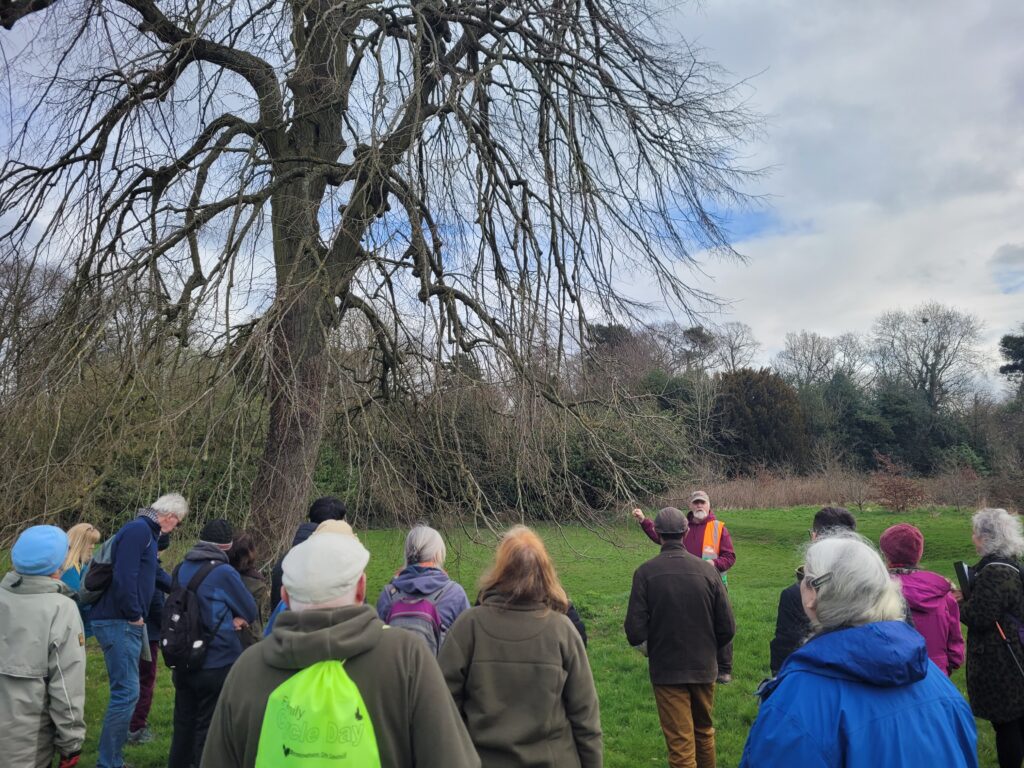


The red (non-native) and white (native) Oaks can be differentiated by their buds; red has alternate buds and we can use the terminal bud for ID, or their large leaves when they’re present, but white has a different bud arrangement.
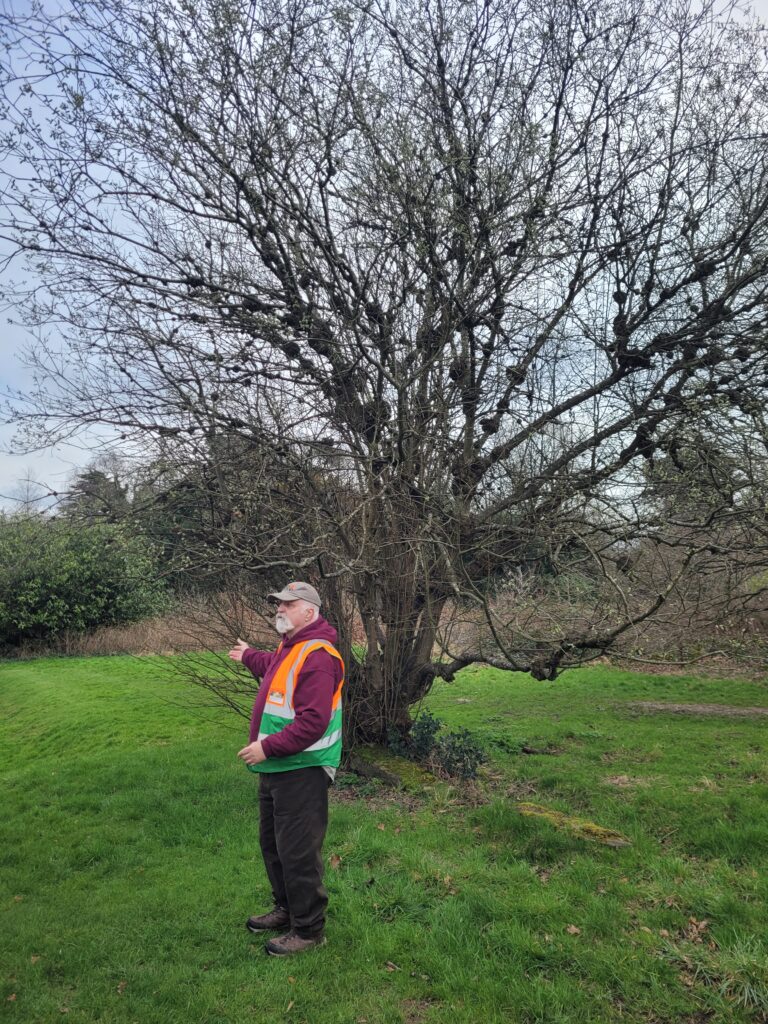
The Goat Willow, coexisting with the Goat Moth, had a bacterial canker that caused girdling of the branches, killing them over time. These trees are also a Phoenix tree, meaning if they fall on their side, they usually keep growing! Beeches however, in the same family as Oak, do not have deep, strong roots, so drought can easily kill them.
The Dawn Redwood has alternate opposite needles, tolerant of pollution and varying soil conditions, making for a great street tree. The park also boasts an irregular avenue of Whitebeams, but they don’t do too well with trunk damage, so we are going to work with the Friends group to replace the lost trees.
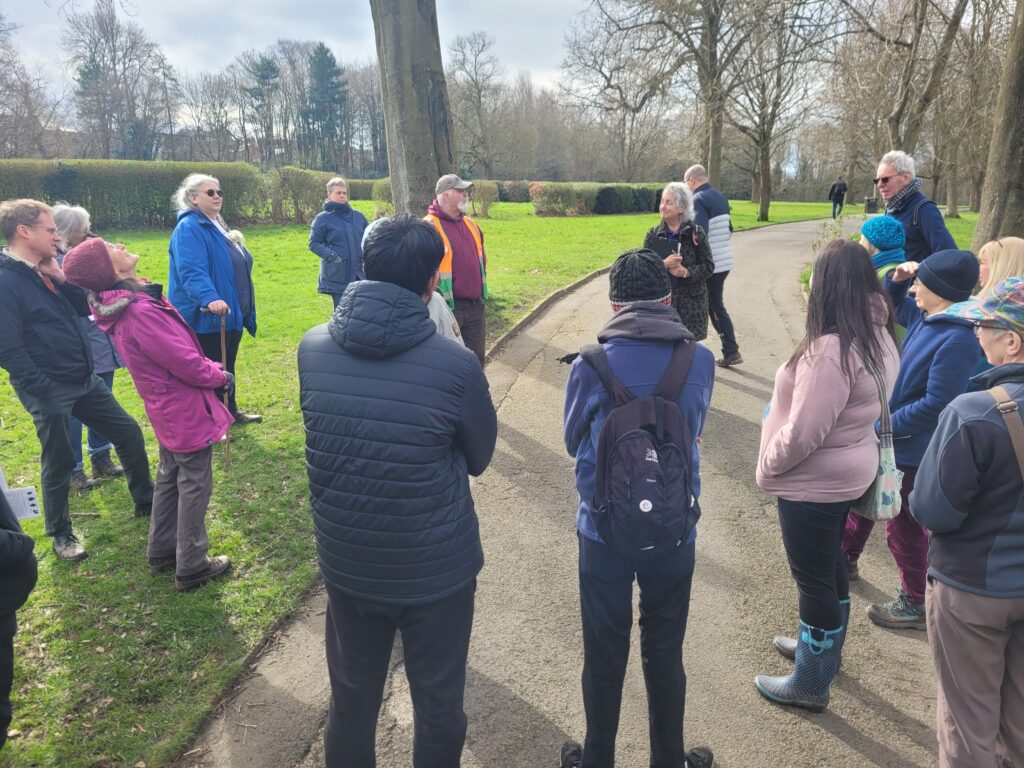
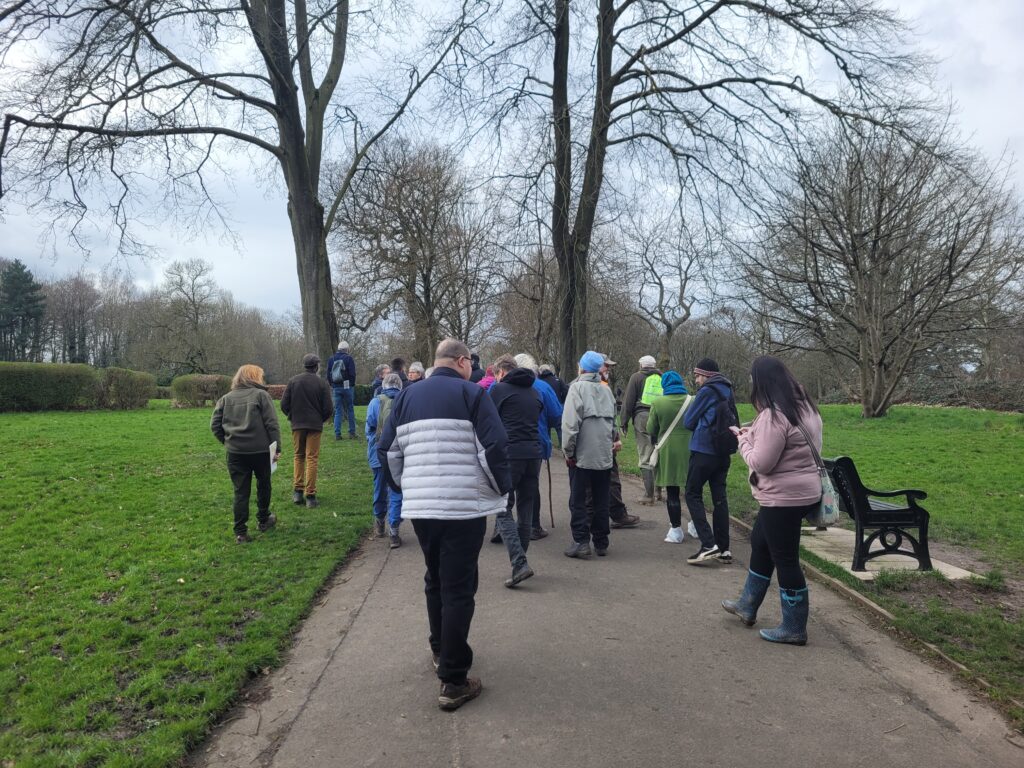

After discussing Cherry’s extra floral nectaries to attract the predators of their predators, we ended on the ancient Field Maple, whose leaves are like Liquidambar, therefore the opposite buds are key to identifying this tree.
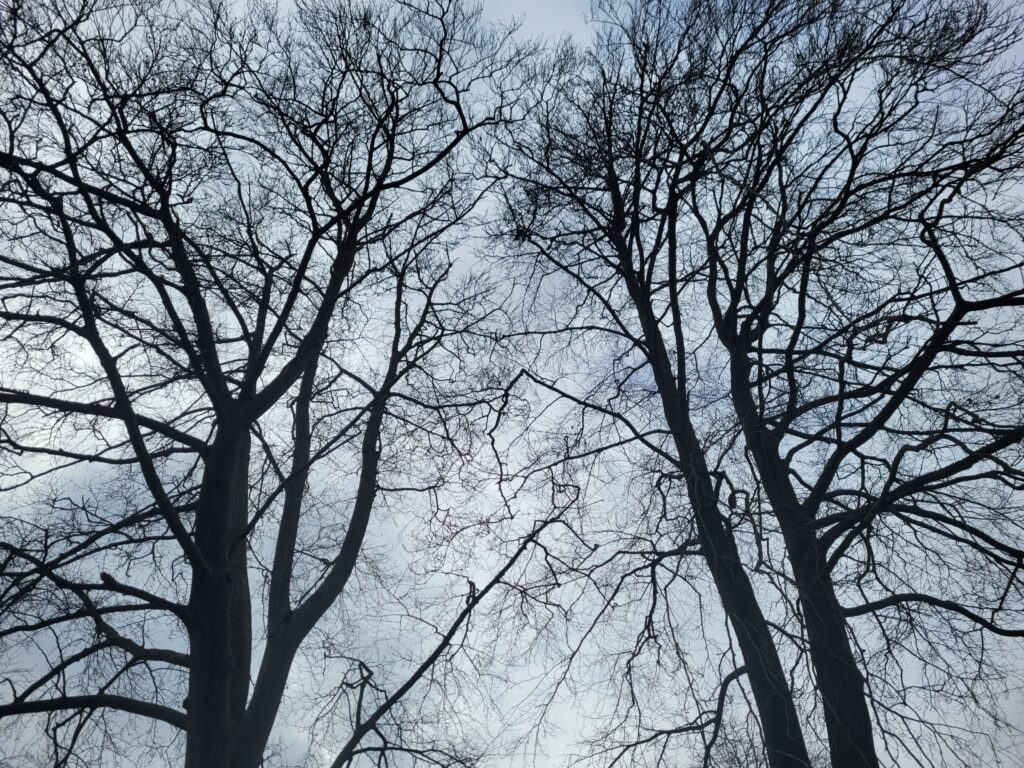
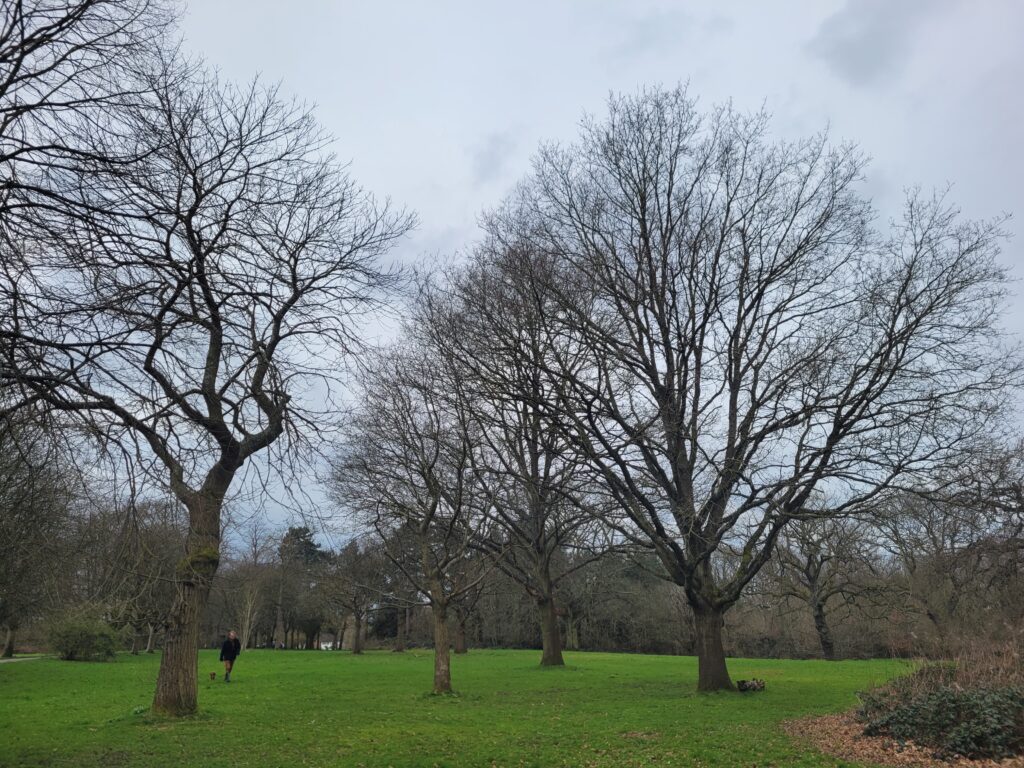
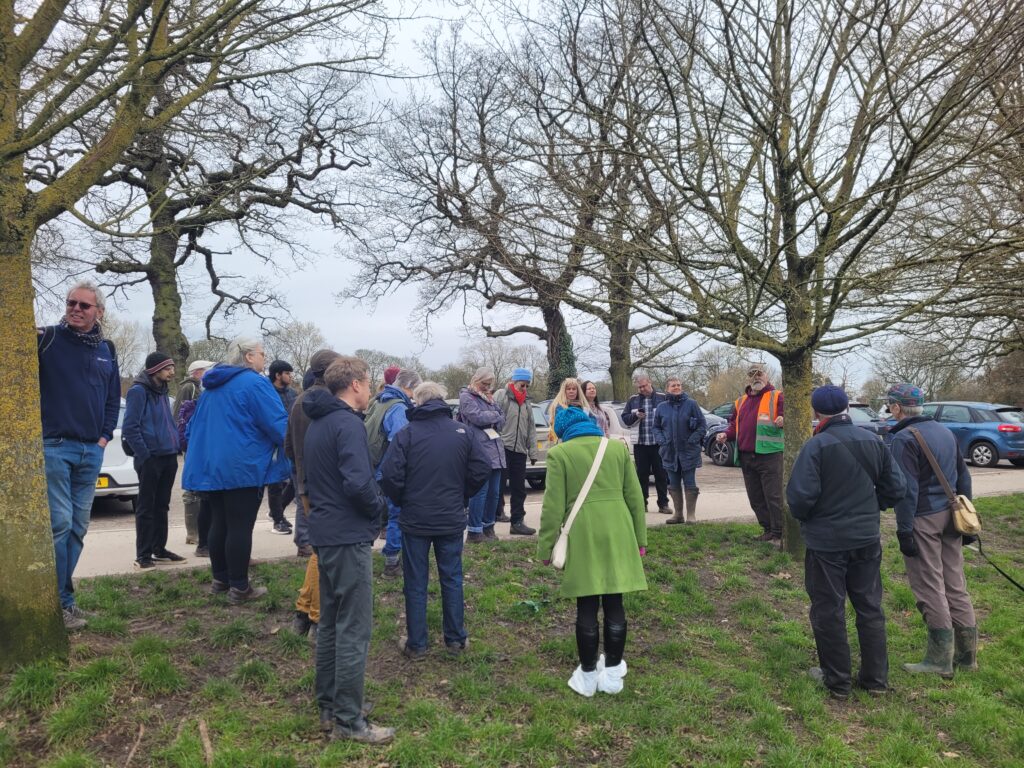
Huge thanks to all the volunteers who attended, and we look forward to the next one!
